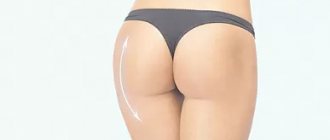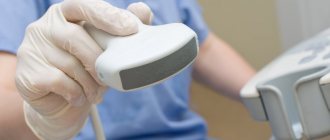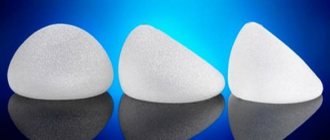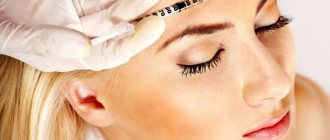The list of indications for transconjunctival blepharoplasty includes aesthetic defects caused by excess periorbital subcutaneous tissue of the lower eyelid. As a rule, surgery through the conjunctival approach is performed for the following indications:
- fatty hernias of the lower eyelid;
- a noticeable border between the cheek and lower eyelid;
- moderately pronounced tear trough;
- sickly appearance and tired look due to bags under the eyes;
Transconjunctival blepharoplasty of the lower eyelids gives an excellent result if there is no excess skin and all problems are at the level of the fat layer. However, age-related skin changes are not a contraindication. They can be corrected by other methods of aesthetic medicine, and with the help of eyelid surgery, the volume and distribution of fatty tissue can be corrected as part of a comprehensive rejuvenation program.
What is blepharoplasty and how does transconjunctival blepharoplasty differ from classical blepharoplasty?
Blepharoplasty is the correction of the upper and/or lower eyelids. The transconjunctival technique can also be combined with a change in the shape of the eye, correction of the upper eyelids or eyebrows, and even with a facelift.
Transconjunctival blepharoplasty takes less time than traditional blepharoplasty. After such an intervention, there is no need to remove the sutures, since the technique involves access to the infraorbital region through microscopic punctures on the inside of the lower eyelid. After classical blepharoplasty, the appearance of the eyes may change slightly due to swelling; with transconjunctival blepharoplasty, this is excluded. The possibility of a defect arising due to illiterate intervention, namely an everting eyelid, is also excluded.
Contraindications for surgery
Transconjunctival blepharoplasty, like most plastic surgeries, is performed under general anesthesia, so there are a number of contraindications that will make it impossible to perform the operation under this type of anesthesia.
If you have serious chronic diseases of internal organs, acute respiratory diseases, autoimmune diseases, bleeding disorders, pregnancy or breastfeeding, exacerbation of skin diseases in the eyelid area, then you may be denied surgery. We take an individual approach to each patient, so we consider a specific medical case in detail.
How is the operation performed?
The surgeon pulls back the lower eyelid and makes a microscopic incision in the conjunctiva, below the lash line. After this, the fat sac itself is removed. The entire operation lasts on average no more than forty minutes. There are no traces of surgical intervention left in the eye area, and the shape of the eyes does not change.
Due to its low morbidity, such an operation can be performed both under general anesthesia and sedation. Sedation assumes that the patient remains conscious, but does not feel pain or psychological discomfort. The type of anesthesia is discussed in advance with the anesthesiologist before the operation. The doctor chooses the method of anesthesia based on the physiological and emotional state of the patient.
The operation can also be performed under local anesthesia, but then it may be difficult for the patient to remain calm and still, which is inconvenient for both the surgeon and the patient.
Day 1
The operation is performed under local or regional anesthesia. Therefore, the patient quickly comes to his senses.
Immediately after blepharoplasty, the patient is transported to a ward where his condition is monitored. A pressure bandage is applied to the eyes (for 5-6 hours).
If there are no signs of complications, he will be allowed to go home after a few hours. Naturally, the doctor will immediately identify a number of restrictions and issue a list of recommendations.
At first, the patient may be concerned about:
- Burning feeling
- Tingling
- Mild pain at intervention sites
- Sensation of a foreign object in the eye
- Edema
- Bruising
- Bruises
But these are natural reactions of the body to intervention. All this is normal up to certain limits.
However, if the pain is severe, you should tell your doctor immediately.
Recovery period
For the first hour, you need to stay in the room and keep a cold compress over your eyes. There is no strict ban on working with technology or reading as such, but on the first day, if there is tension in the eyes, a feeling of “sand” may occur. There may also be a problem with focusing. This is individual, but there is nothing wrong with these reactions. It is better to limit work with electronic equipment for up to seven days. If this is not possible, then you should lower the brightness of your monitor or screen and take breaks as often as possible.
After surgery, special bandages-plasters are attached to the lower eyelids. The doctor will remove them three to four days after the intervention. At first, bruises may appear on the operated area, and dark circles may persist for a week. This is also normal.
Upon returning home in the morning and evening, it is recommended to make compresses with chilled chamomile infusion. Sometimes blood vessels in the eyes can burst, but this is rare. In this case, the doctor prescribes drops to narrow blood vessels. Most often, it is possible to limit yourself only to disinfectants and ointments to relieve swelling and bruises (for example, badyaga or traumeel).
During this period, it is extremely important to strictly follow all the recommendations of your doctor. The speed of regeneration is individual for everyone; it is impossible to predict the exact period. But following the surgeon's instructions will definitely help speed up the process. Touching your eyelids during this period can be painful. Swelling, a bluish tint to the skin, and the appearance of ichor are also possible. It is not advisable to scratch the skin in the operated area or use decorative cosmetics.
Air travel is not recommended for the first five days. For fourteen days you should not lift weights, undergo physical activity, or tilt your head down. There is a ban on solariums and contact lenses. You cannot go to the bathhouse, sauna or swimming pool for a month. If the sun is at its peak, be sure to wear protective sunglasses.
On average, symptoms disappear completely within a couple of weeks. The eyes stop getting tired, and the condition of the skin and eyelids returns to normal. Touching is no longer painful, the eyelids stop swelling, and the dark circles become smaller.
How to prepare for transconjunctival blepharoplasty
When preparing for surgery, it is important to stop drinking alcohol and smoking two weeks before surgery, this guarantees optimal recovery without oxygen starvation of the tissues.
It is necessary to collect a number of tests, including a general blood and urine test, a biochemical blood test, and an ophthalmologist’s report. Taking hormonal drugs and drugs that affect blood clotting should be stopped several days before surgery to avoid the risk of complications. It is important to avoid sunbathing and tanning beds a week before blepharoplasty, as surgery always carries the risk of subsequent hyperpigmentation.
You should not eat or drink on the day of surgery. You must come to the clinic without makeup or jewelry. All tasks should be distributed in such a way that nothing disturbs you during the week and no social activity is required. It’s good if there is the possibility of support from one of your relatives or friends.
Result
The result is a stunning aesthetic effect and increased self-confidence! The effect can last for 15-20 years if you monitor your lifestyle: eat right, maintain a normal weight, and eliminate bad habits. After this period ends, age-related changes begin, and then it is appropriate to resort to the help of classical blepharoplasty.
Also, after the operation, the saturation of the dark color under the eyes is reduced due to the leveled surface and elimination of the relief from the hernia. To eliminate it completely, you can use lightening injections from a cosmetologist or do permanent makeup.
Why is treatment necessary in a medical facility?
We recommend performing lower transconjunctival blepharoplasty in Minsk with us, because our doctors guarantee a high-quality result of the operation that will delight you for many years! The surgeons of our clinic are true professionals who have significant experience in performing lower transconjunctival blepharoplasty in Minsk. In addition, our prices will please each of our patients!
Question answer
How can you reduce swelling of the operated area without the use of medications?
Typically, the attending physician will prescribe a number of medications to the patient to reduce inflammation and swelling in the area where the surgery was performed. However, there are effective non-drug methods for eliminating inflammation syndrome - for example, applying cold. Cold reduces pain due to its effect on peripheral nerve endings, and also reduces the severity of inflammation, swelling and redness due to the narrowing of blood vessels.
Is there an age limit for using transconjunctival access?
Often transconjunctival blepharoplasty is used in patients under the age of 35 years. After 40 years, many people develop overstretched skin of the lower eyelids, as well as creases that need to be eliminated using classic lower eyelid plastic surgery.
What problems does transconjunctival lower eyelid blepharoplasty solve?
Indications for plastic surgery are the following imperfections:
- fatty hernias of the lower eyelid;
- bags under the eyes;
- eyelid skin ptosis;
- other cosmetic defects that cause psychological discomfort.
Benefits of transconjunctival blepharoplasty
Due to the fact that the manipulations are performed through an incision on the conjunctiva, there are no visible seams. Transconjunctival blepharoplasty of the lower eyelids is low-traumatic, so the rehabilitation process is faster (about 2 weeks). The risk of complications (for example, ectropion) is eliminated. After surgery, patients look 7–10 years younger.
PREOPERATIVE CONSULTATION.
Patient complaints.
“Ever since my youth, when I was 20 years old, I have always had the problem of drooping eyelids. Problems with makeup to apply a line of arrows. Accordingly, with age, the fold only increased and became worse and worse. Age-related changes cannot be avoided, the time has come, it’s time.”
Conversation between doctor and patient.
During the consultation, medical indications are determined. The patient has an excess skin fold of the upper eyelid. The first problem is that the crease hangs over and interferes with applying makeup; it can be a little irritating, especially during the period when there is slight swelling, as it gets larger and interferes with taking beautiful photographs. I don’t like his appearance, he’s tired and gloomy. The second problem is the position of the eyebrows. It's different for everyone. In this situation, the position of the eyebrows is quite low and this cannot be ignored, because the patient is indicated for 2 operations: plastic surgery of the upper eyelids and subsequently endoscopic brow lift.
Taking photographs.
Medical photography is a standard procedure related to medical documentation. You cannot perform aesthetic surgeries to change your appearance or correct age-related changes or birth defects without photographs. We need photography to evaluate the results before and after. Photographing is performed in 3 projections: frontal, lateral and semi-lateral, with eyes closed and open. In these positions it will be clearly visible what excess skin of periorbital hernias was before the operation and what result we will get in the end.
Marking.
An important step before surgery. At the preoperative marking stage, it is important to assess the volume of skin that is to be removed. It is known that there are certain limits, these are 9 mm from the eyelash edge and 15 mm from the eyebrow growth line. Within these limits, the skin fold can be removed. You cannot remove any more, otherwise you may get a noticeable scar that will not fit into the fold of the upper eyelid. You may also get the effect of emptiness in the area of the upper eyelid, which makes you look older and gives you age. And our goal is to get a rejuvenation effect. Therefore, it is important to consider how much skin and fatty periorbital hernias to remove. You can't do hypercorrection, because... This will make you look older and look exhausted. It is better not to remove more tissue than to go through it during surgery. But another important point is that when we potentially know that there will be a brow lift surgery, we should not remove too much skin. Otherwise, in the future, when raising the eyebrows, there will be excessive tension, as well as the effect of emptiness of the upper eyelid and tension when closing the eyes. But another important point is the cut. When we first perform upper eyelid surgery and then endoscopic brow lift, we must take into account how we will draw the incision line, since when the eyebrow is raised, the incision may extend onto the eyebrow and become noticeable.










